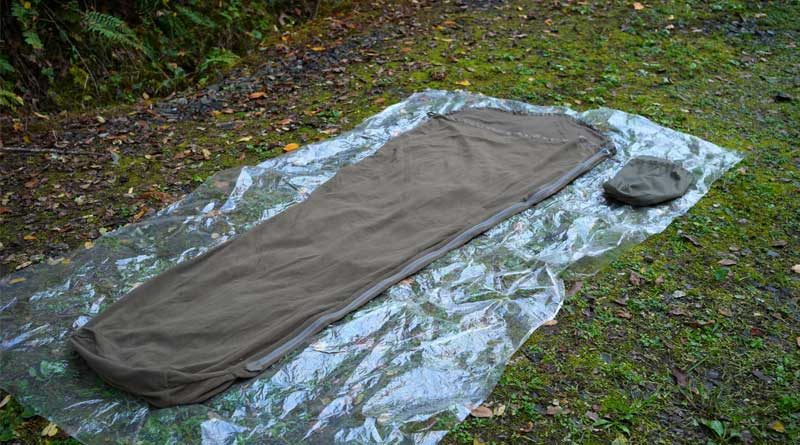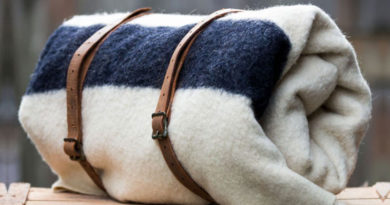How to Use a Sleeping Bag Liner: A Useful Guide
In this article, I am going to show you what is a sleeping bag liner, how to use it, and whether you need one for your sleeping bag. I will also discuss some pros and cons and whether spending money on liners is really worth it. Finally, I will discuss some critical points if you purchase one for yourself. You may already know what they are or even already have one. But you might be missing out on a better night’s sleep if you don’t have the right tool for the job.
What is a sleeping bag liner?
A sleeping bag liner is an accessory, or more specifically, a piece of fabric that goes inside your sleeping bag as an extension. It adds a few degrees of warmth to your sleeping system because you have an additional layer of insulation around you. It also protects your bag from getting dirty. When you use your bag frequently, it absorbs a lot of dirt, dust, body oil, and sweat. These things make your bag really sticky. Washing a sleeping bag is also not easy and it can also reduce the life of your sleeping bag. So, by using a liner, you can protect your bag from getting dirty. Also, liners are cheap and easy to wash. They are easy to replace and less susceptible to damage.
How to use it?
Using a sleeping bag liner is very easy. You just need to put your liner inside the sleeping bag and crawl in the liner instead of the sleeping bag. Here is the step-by-step instruction for using liners:
- Pull your liner out of its stuff sack
- Unzip your sleeping bag completely
- Put your liner inside the bag and spread it
- Secure Velcro tabs, if there are any
- Adjust the foot-box and hood to your liking
- Crawl in the liner and zip it up
- Adjust the hood if you need to
- Sweet dreams
If your liner has some additional features, then follow the manufacturer’s guidelines to get the most out of your liner.
Why do you need a liner?
The obvious reason for a liner is to extend the life of your sleeping bag. Essentially, a liner is like a sheet that separates your skin from your sleeping bag, which can easily be removed from the bag to be washed separately. This means less frequent cleaning of your actual sleeping bag, which can help extend the useful life of your bag. Your bag is probably not cheap unlike a liner, which is much less costly to replace and also less susceptible to damage when washing. This is an important aspect of sleeping bag liners and if this is your only goal with one, it doesn’t matter which one you choose.
However, there is another thing to look at and that is that a sleeping bag liner is and should be an integral part of your overall sleep system. It doesn’t just mean adding warmth to your sleeping bag though. Sometimes breathability, texture, or allergy concerns are more important. When building a sleep system, it’s important to know the conditions you’ll be sleeping in and build a system of parts that work together, complement each other, and offset each other’s weaknesses. A sleeping bag liner seems like a boring piece of gear not worth much concern or consideration but choosing the right one really can make a world of difference in overall comfort and quality of camp life.
How much warmth does it add?
One more obvious consideration with a sleeping bag liner is that it can add a few degrees of warmth to your sleep system typically between 5 to 15 degrees Fahrenheit. Sometimes in the summer, that isn’t necessarily a good thing but this can be remedied by opting for a liner made of a material that offers good heat transfer or by using a liner on top of your sleeping bag as a standalone blanket on really hot nights.
How to choose a sleeping bag liner?
There are several options to choose from when deciding on a sleeping bag liner. I am going to discuss the different strengths and weaknesses of insulated, fleece, cotton, synthetics, and silk liners. I am also going to tell you my personal preference for liners and why.
Insulated
Insulated liners offer the most additional warmth. These are ideal for cold weather camping or camping at a higher elevation. They’re not great for summer trips to the desert and they can also be expensive. They also pack pretty largely. In other words, this is most likely overkill and the usefulness of this liner will likely not justify the pack size and weight it takes up in your backpack.
Fleece
Fleece adds a good amount of warmth second to insulated liners depending on model and features. It is also soft and comfortable but this is not a great option for summer trips unless you’re using it as a standalone blanket. If you want to save money on gear and you tend to push late into the fall with your camping, then this is a good option for getting some extra warmth from your sleeping bag when it’s cold and in the summer you could always skip the sleeping bag and just take the liner. Fleece also has moisture-wicking properties and it dries quickly; both useful features for camping. Much like the insulated liners fleece will be bulky and heavy and more is not always better.
Cotton
A cotton is a cheap option that is rugged and durable. But it doesn’t dry quickly and it packs fairly large and it can also be heavy. It is an option and not necessarily a bad one if you aren’t concerned about weight and pack size.
Synthetics
Synthetics are a good option for warm weather or even colder weather depending on the model and features. It’s usually breathable in moisture-wicking, which means it will pull sweat away from your body at night and spread it out in the fabric so it can evaporate more quickly. Both of these features are good for warm weather camping but also when it’s cold, these features will still come in handy. They also tend to pack small and they’re lighter than the other options I’ve covered so far.
Silk
Silk is my personal favorite due to its versatile nature. I am not saying this is the right option for every trip. If your winter camping on your bike, you may want to go with a fleece or insulated option. But for most motorcycle camping needs silk will fit the bill nicely. For starters, it’s lightweight and packs small which is a good start. But here’s the strength of silk that really shines for me. It works well in both cold and hot climates. Silk can be insulated in the cold and can also be breathable in the heat. It helps absorb moisture. So for hot and humid, this is a great option and when temperatures drop and you need a little extra warmth and insulation, silk provides.
Liners also come in different shapes depending on whether you prefer the mummy-style or rectangular. There are lots of options to choose from. So hopefully, this helps you narrow down what you’re looking for to fit your needs and hopefully, this sheds a little light on why they are so important.
Pros and cons to using liners
Where sleeping bag liners add warmth to your sleep system, it also adds bulk and you have one more thing to worry about.
Pros
Here are some pros to using sleeping bag liners:
- The obvious benefit is that it makes your bag warmer by adding a few degrees of warmth
- Keeps your bag protected from dirt by reducing the washing cycles
- Cheaper and easy to replace than traditional bags
- Can be used as a standalone bag or a blanket
- Makes your 2-season bag into a 3-season bag
Cons
Here are some cons to using sleeping bag liners:
- Adds extra bulk and if you’re backpacking, this can be a huge problem
- It can be an unnecessary piece of gear for summer adventure
- Adds additional steps when you are setting up your sleep system at night
- It may not be comfortable for some people
- Somewhat reduces freedom of movement
Conclusion
In conclusion, a sleeping bag liner is a piece of gear that goes inside your bag to make it a little warmer. It adds a few degrees of warmth to your sleeping bag. It’s very easy to use and all you need to just put it inside your bag and that’s it. There are some pros and cons associated with using a one and the need to use it can depend on the situation where you will be sleeping. It’s worth spending money on it especially if you thinking about upgrading your sleeping bag. A liner can be a cheap option that can add extra warmth to your bag eliminating the need to replace the bag.




